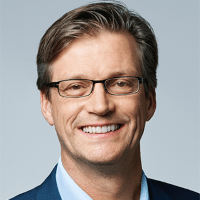Here’s to JOE: Marking the 50th Anniversary with Notable Author Dr. Ove Peters
 Compiled by Elisabeth Lisican
Compiled by Elisabeth Lisican
There are certain Journal authors who stand out, given their longevity with the publication and the impact they’ve made on the specialty. One of these undoubtedly is Dr. Ove Peters, Discipline Lead, Endodontics, and Head of Clinical Dentistry at School of Dentistry, The University of Queensland, Brisbane, Australia. AAE’s Assistant Director of Communications & Publishing Elisabeth Lisican recently caught up with him to mark the JOE‘s upcoming 50th anniversary.
Elisabeth Lisican: Reflecting on your journey as a JOE author, how has the Journal evolved since you first contributed?
Dr. Ove Peters: The most obvious change occurred when with the change of editorship from Hank Van Hassel to Ken Hargreaves, I distinctly recall the letters we would receive back from Hank in his immaculate handwriting but obviously the use of digital systems for submissions was inevitable. Now the journal is streamlined into distinct categories, including Basic Research Biology and Regenerative Endodontics. There is a notable move towards more in depth pulp biology, in line with where the specialty has moved in the last 15 years or so.
Lisican: What do you think has been the most significant advancement in endodontics reflected in the JOE over the past 50 years?
Dr. Peters: Indeed, it is the emergence of Regenerative Endodontics, which has been instrumental in reframing the specialty from a very technical one to its biologic foundation.
Lisican: Looking back, is there a particular paper you published in JOE that stands out as especially impactful? What made it significant?
Dr. Peters: Good question, all my papers are dear to me in way, but I must mention the 2004 review, still very frequently cited. This paper was written following an invitation and gave me the opportunity to put my thoughts on canal preparation on paper. While citation numbers are not all that important, it stands now at just below 1,000 citations and must have filled a gap in knowledge, it certainly showcased the power of the microCT representations of canal preparation.
Lisican: What trends in endodontic research have you seen emerge through JOE’s pages, and how do you think they have shaped the field?
Dr. Peters: One important trend is the emergency of well conducted prospective clinical studies, such as in vital pulp therapy. Retrospective and observational studies are no longer sufficient to illustrate the clinical relevance of a specific therapy. Moreover, patient reported outcome measures are clearly established in clinical research.
Lisican: The Journal has contributed to a wealth of knowledge over five decades. What do you see as JOE’s legacy in the next 50 years?
Dr. Peters: The JOE will stay on as the journal of the AAE, which secures its relevance in the ever-changing marketplace. I recall a conversation I had with Ken Hargreaves many years ago, around the different models, textbooks that are pretty much at tail end of new knowledge, journals that reflect peer review and social media that presents very early uncurated information. I do believe that the JOE will be still there, maybe with a bit of a shift towards more of an online mode. But 50 years is a very long time, I am more confident to predict the next 10 years!
Lisican: What advice would you give to young researchers and clinicians aspiring to contribute to JOE in the future?
Dr. Peters: It is crucial to put one’s ideas towards peer review; the main stages outside the home institution are journal publications and presentations at meetings; perhaps one step further is grant applications. The ability to publish in the premier journals in the field is decisive for progress in academia, in that sense I am glad that my group is still in the game, meaning is not only the one paper but also continuity.
For an aspiring researcher, the best step is to connect to a mentor or a group that has a track record in the field. I would like to make a distinction between academic researchers that still face the “publish or perish” dilemma and clinician researchers, like me, that have perhaps a little less pressure. It would be great to see clinicians, even from private practice more involved in the journal. This could be an opportunity for the DSOs to contribute with their vast data collections and often reasonably standardized treatment modalities. Lots of good stuff still to come for the JOE!




